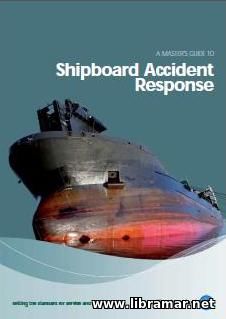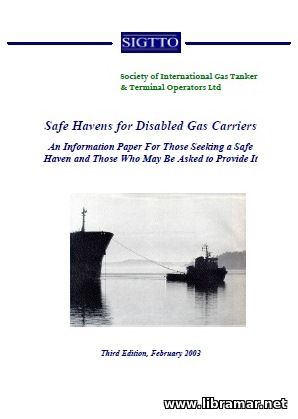Transportation of Liquid and Hazardous Cargo – Historical Background

We can be confident that among the first problems seafaring men had to solve before venturing any distance from shore was the transportation of liquid cargo, that is, a supply of fresh water. Across the centuries the retention of an adequate amount of drinkable fresh water at sea has held prime importance. As water craft progressed from canoe and coracle to merchant vessels to men-of-war, the variety of liquids carried increased. Bladders, gourds, jugs, amphorae, casks, and tuns were among the many forms of containers utilized. The ancient craft of cooper had to do with preparation of these containers, and one of the concerns of a ship's carpenter was the staunchness of barrels and kegs aboard.
This transport of liquids in individual, portable quantities and containers continued unchanged until the late 19th century. Several ships were designed after 1863 endeavoring to improve liquid transport, by use of the hull as container. The first oil tanker, Gluckauf, in 1886 with her engine room aft was, in many respects, save for her suit of sails, similar to the tankers of today. She was dedicated exclusively to the carriage of oil, some 2,300 tons, and reportedly served successfully until she ran aground in 1893 on Fire Island. In the course of nearly a century since, oil tankers have grown to vessels carrying over 200 times that quantity.
In the late 1950's the successful experience in the transport of petroleum products in tankers together with the growth of chemical products, many derived from petroleum, brought in the movement of bulk cargos of considerable variety, including the initial experimentation with the transport of cryogenic products such as liquefied natural gas (LNG) and liquefied petroleum gas (LPG). Much of this early activity was conducted in barges plying the Mississippi and Ohio River systems.
In 1961, a hopper barge of minimum reserve buoyancy carrying about 1,000 tons of chlorine in four independent tanks, sank in the vicinity of Natchez, Mississippi, and was lost in the silt of the river bottom. Recovery of the barge and its cargo to eliminate a potential substantial hazard to the general populace cost $4 million. From this incident it was clear that a new system of regulation was necessary.
For future shipments of substances as hazardous as chlorine, three classes of barge construction were set out in U. S. Coast Guard (USCG) Regulations. Emphasis was placed on ability of the vessel to survive damage it might suffer in normal service and still retain its cargo after damage. Existing craft were required either to be modified or taken out of the hazardous cargo trade. At the same time, the National Academy of Sciences was requested to evolve a classification system that would identify and rank the hazards in the properties of new chemicals for water transport.
Coincident with the development of these construction controls for barges, there began a significant sea trade from American petro-chemical plants to Europe and Japan. There was concern that the ships utilized for this service, all of  foreign registry, would not have the requisite safeguards to assure containment of the cargo after damage. In 1964, a program was begun requiring that plans of the cargo containment area, related piping systems, and electric systems of chemical ships which operate from United States ports be submitted for technical review by the USCG.
foreign registry, would not have the requisite safeguards to assure containment of the cargo after damage. In 1964, a program was begun requiring that plans of the cargo containment area, related piping systems, and electric systems of chemical ships which operate from United States ports be submitted for technical review by the USCG.
By 1967 the workload imposed by world-wide construction under the conditions of this Letter of Compliance Program was overcoming the capability of the USCG technical staff. The solution seen was an international system of regulations under which the Government of registry would enforce requirements for construction. The United States requested the Intergovernmental Maritime Consultative Organization (IMCO) to create a subcommittee for this purpose.
The IMCO Subcommittee on Ship Design and Equipment was authorized and initially assigned the program of developing a system of regulations appropriate to the transport of bulk chemicals, including shipment in large portable containers and tanks. Incorporating United States contributions relative to the classification of hazardous substances and the development of the related construction program, IMCO eventually adopted a Code for the construction of bulk chemical carriers and another Code for those transporting liquefied gases. These Codes are based on the principle of countering increased risk with increased defense by relating particular cargos to certain classes and levels of vessel construction and containment.
With respect to oil cargos, in March 1967 the Liberian tanker Torrey Canyon ran aground on Seven Stones Reef off the south coast of England. Had the ship and all hands been lost without trace, the world today would not know the ship's name. But between the grounding and the salvage efforts, a good deal of the nearly 120,000-ton cargo of crude oil was released in an area dependent on fishing and tourism.
This incident focused attention on the subject of pollution of the sea leading to a number of new international treaties and the revision of existing agreements. The "International Convention for the Prevention of Pollution from Ships, 1973" incorporated many requirements affecting ship construction, especially of tank ships. The USCG has translated these provisions into detailed domestic regulations in implementing the Ports and Waterways Safety Act.
The winter of 1976-7 was remarkable for a great many accidents off the coast of the United States involving oil tankers. In a burst of national outrage, new restrictive regulations were proposed. In February 1978 at another international meeting under the auspices of IMCO a number of new provisions were adopted as protocols to the 1973 Convention and the 1974 Safety of Life at Sea (SOLAS) Convention.
It is extremely difficult to provide a full description of regulations applied to construction and operation of tank ships especially those carrying oil. Many of these requirements may be retroactive, requiring refit of existing ships; others apply to new construction under different time scales for implementation. A thorough job of research is recommended before undertaking design work of this nature.
The "Read Later" function allows you to add material to this block with just one click. Just click on the icon and read the articles that interest you at any convenient time.


